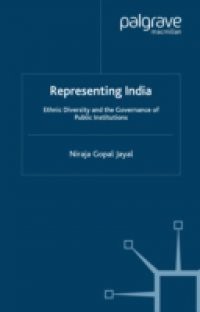This book on India is part of a multi-country study examining how ethnic diversity is represented in public institutions. It provides a broad-brush account of cultural diversity in India; the contentions over identity; the institutions devised to manage and negotiate diversity; and the patterns of representation in public institutions.Presenting new data on India's Parliament and Cabinet since 1991, this book provides a comprehensive account of representation along several axes simultaneously - caste, tribe and religion. It emphasises the overlapping nature of social and economic inequalities in India, and seeks to restore to the debate on ethnic and cultural inequality the centrality of the issue of material disadvantage. A policy or political solution couched exclusively in the language of ethnicity and cultural identity, it argues, is inadequate to the task of crafting a more equal society in which members of all groups can enjoy the rights of citizenship in the fullest sense.

